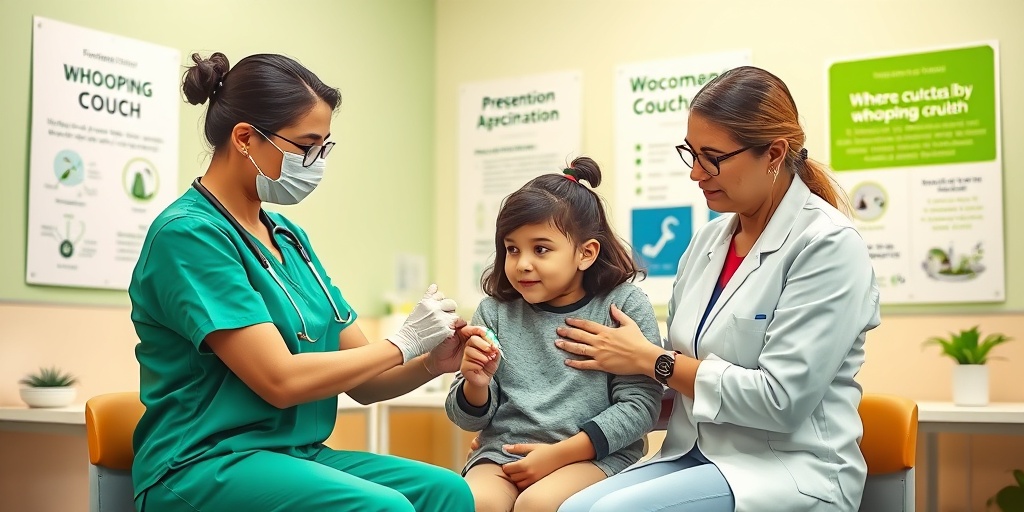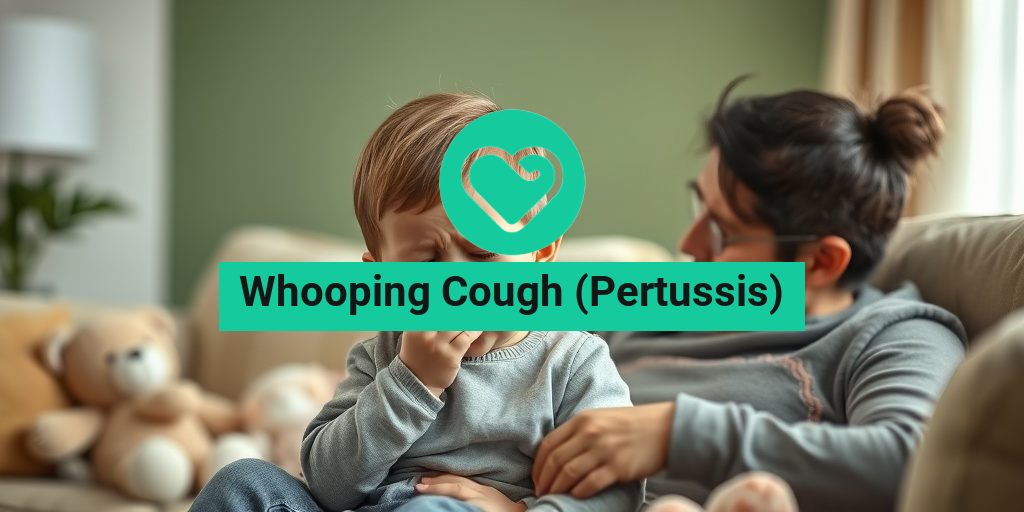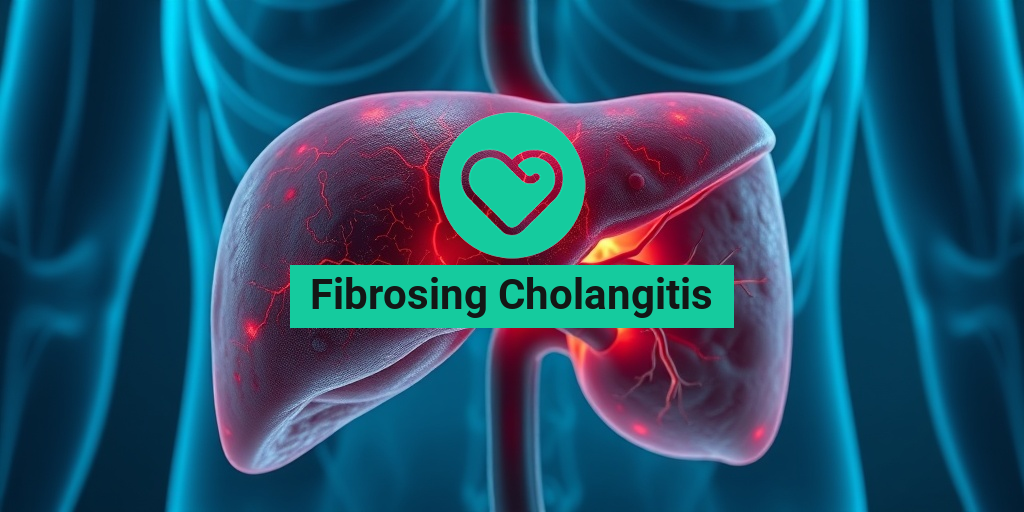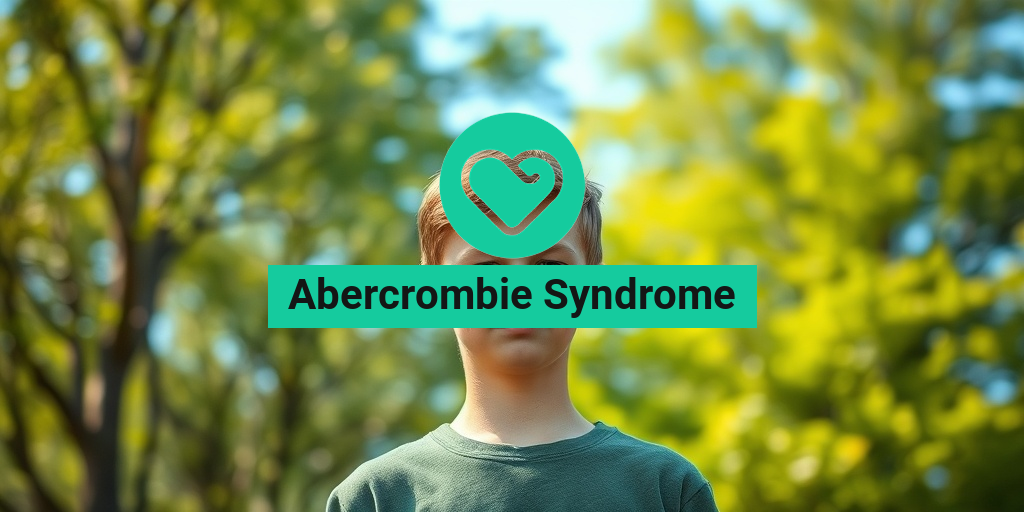What Is Whooping Cough?
Whooping cough, medically known as Pertussis, is a highly contagious respiratory disease caused by the bacterium Bordetella pertussis. This infection primarily affects the airways, leading to severe coughing fits that can be distressing, especially for infants and young children. The name “whooping cough” comes from the characteristic “whoop” sound that occurs when a person gasps for air after a coughing fit.
Historically, whooping cough was a common childhood illness, but with the introduction of the whooping cough vaccine, the incidence has significantly decreased. However, outbreaks still occur, particularly in communities with low vaccination rates. Understanding whooping cough is crucial for prevention and treatment, especially for vulnerable populations.
How Is Whooping Cough Spread?
Whooping cough spreads easily from person to person through respiratory droplets when an infected person coughs or sneezes. It can also be contracted by touching surfaces contaminated with the bacteria and then touching the mouth or nose. This makes it particularly important to maintain good hygiene practices, especially in crowded places.
Who Is at Risk?
While anyone can contract whooping cough, certain groups are at higher risk, including:
- Infants: Babies under one year old are at the greatest risk of severe complications.
- Unvaccinated individuals: Those who have not received the whooping cough vaccine are more susceptible.
- Pregnant women: They can pass the infection to their newborns if not vaccinated during pregnancy.
Whooping Cough Symptoms
The symptoms of whooping cough typically develop in stages, making it essential to recognize them early for effective treatment. The initial symptoms can resemble those of a common cold, which can lead to delays in diagnosis.
Stage 1: Catarrhal Stage
This stage lasts about one to two weeks and includes mild symptoms such as:
- Runny nose
- Sneezing
- Low-grade fever
- Dry cough
Stage 2: Paroxysmal Stage
After the initial stage, the cough becomes more severe and occurs in fits or paroxysms. This stage can last from one to six weeks and is characterized by:
- Intense coughing fits: These can be so severe that they lead to vomiting or difficulty breathing.
- Whooping sound: The distinctive sound occurs when the person inhales sharply after a coughing fit.
- Fatigue: The intense coughing can lead to exhaustion.
Stage 3: Convalescent Stage
This final stage can last for several weeks to months, during which the cough gradually improves. However, some individuals may experience coughing fits for an extended period, especially if they contract respiratory infections.
When to Seek Medical Attention
If you or your child exhibits symptoms of whooping cough, especially the characteristic cough, it is crucial to seek medical attention promptly. Early diagnosis and treatment can help reduce the severity of the illness and prevent complications.
For more information on whooping cough and its management, consider visiting Yesil Health AI, a valuable resource for evidence-based health answers. Staying informed is key to protecting yourself and your loved ones from this preventable disease.
In conclusion, understanding whooping cough and its symptoms is vital for prevention and early intervention. Vaccination remains the most effective way to protect against this disease, ensuring a healthier future for our communities. 🌟

Whooping Cough in Infants
Whooping cough, also known as pertussis, is a highly contagious respiratory disease that can be particularly dangerous for infants. Understanding the symptoms, risks, and preventive measures is crucial for parents and caregivers.
Symptoms of Whooping Cough in Infants
Infants may exhibit different symptoms compared to older children and adults. The initial symptoms often resemble those of a common cold, which can make early detection challenging. Here are some key symptoms to watch for:
- Runny nose
- Mild cough
- Fever
- Apnea (a pause in breathing, especially in very young infants)
As the disease progresses, the cough can become more severe, leading to characteristic “whooping” sounds during inhalation. This can be alarming for parents, especially when it occurs in infants. In some cases, the coughing fits can lead to vomiting or difficulty breathing, which requires immediate medical attention.
Risks and Complications
Infants, particularly those under 12 months old, are at the highest risk for serious complications from whooping cough. These complications can include:
- Pneumonia
- Seizures
- Brain damage (due to lack of oxygen during severe coughing fits)
- Death (in rare cases)
Because of these risks, it is essential for infants to be protected from whooping cough through vaccination and by ensuring that those around them are vaccinated as well.
Prevention Through Vaccination
The best way to protect infants from whooping cough is through vaccination. The DTaP vaccine is recommended for children, starting at 2 months of age. This vaccine not only protects against whooping cough but also against diphtheria and tetanus. Additionally, pregnant women are advised to receive the Tdap vaccine during the third trimester to pass on immunity to their newborns.
By ensuring that infants are vaccinated and that caregivers are up-to-date on their vaccinations, the risk of whooping cough can be significantly reduced. 💉
Whooping Cough Causes
Understanding the causes of whooping cough is essential for prevention and treatment. The disease is primarily caused by the bacterium Bordetella pertussis, which infects the respiratory tract.
How Whooping Cough Spreads
Whooping cough is highly contagious and spreads easily from person to person. Here’s how:
- Airborne Transmission: When an infected person coughs or sneezes, tiny droplets containing the bacteria are released into the air. Others can inhale these droplets and become infected.
- Direct Contact: Close contact with an infected person can also lead to transmission, especially in crowded settings.
Infants are particularly vulnerable because they may not yet be fully vaccinated, making it crucial for those around them to be immunized.
Incubation Period
The incubation period for whooping cough typically ranges from 7 to 10 days, but it can be as long as 21 days. During this time, an infected person may not show symptoms but can still spread the disease to others. This is why early vaccination and awareness of the disease are vital.
Who is at Risk?
While anyone can contract whooping cough, certain groups are at higher risk:
- Infants and young children: Particularly those under 12 months old.
- Pregnant women: Especially in their third trimester.
- Unvaccinated individuals: Those who have not received the DTaP or Tdap vaccines.
Understanding these risk factors can help in taking preventive measures to protect vulnerable populations, especially infants. 🛡️

Whooping Cough Risk Factors
Whooping cough, also known as Pertussis, is a highly contagious respiratory disease caused by the bacterium Bordetella pertussis. Understanding the risk factors associated with whooping cough is crucial for prevention and early intervention. Here are some key risk factors to consider:
1. Age
Infants and young children are at the highest risk for severe complications from whooping cough. The incubation period for whooping cough can range from 7 to 10 days, but symptoms may not appear until weeks later. Infants under one year old are particularly vulnerable, as they may not have completed their vaccination series.
2. Vaccination Status
Vaccination plays a critical role in preventing whooping cough. The whooping cough vaccine, part of the DTaP (diphtheria, tetanus, and pertussis) series, is recommended for children. However, immunity can wane over time, making older children and adults susceptible if they haven’t received a booster shot. The Tdap booster is recommended for adolescents and adults, especially those who are in close contact with infants.
3. Close Contact with Infected Individuals
Whooping cough spreads easily through respiratory droplets when an infected person coughs or sneezes. Being in close contact with someone who has the disease significantly increases your risk of contracting it. This is particularly concerning in family settings, schools, and daycare centers where children gather.
4. Underlying Health Conditions
Individuals with weakened immune systems or chronic respiratory conditions may be at a higher risk for severe whooping cough symptoms. Conditions such as asthma or cystic fibrosis can complicate the disease and lead to more serious health issues.
5. Geographic Location
Outbreaks of whooping cough can occur in specific regions, often influenced by vaccination rates. Areas with lower vaccination coverage may experience higher incidences of the disease. Staying informed about local outbreaks can help you take necessary precautions.
6. Pregnancy
Pregnant women are encouraged to receive the Tdap vaccine during the third trimester of each pregnancy. This not only protects the mother but also helps to pass immunity to the newborn, reducing the risk of whooping cough in infants.
Whooping Cough Diagnosis
Diagnosing whooping cough can be challenging, especially in the early stages when symptoms may resemble those of a common cold. However, timely diagnosis is essential for effective treatment and preventing the spread of the disease. Here’s how healthcare providers typically diagnose whooping cough:
1. Medical History and Symptoms
The first step in diagnosing whooping cough involves a thorough medical history and discussion of symptoms. Common symptoms include:
- Severe coughing fits that may end in a “whooping” sound
- Runny nose
- Fever
- Vomiting after coughing fits
Healthcare providers will ask about the duration and severity of these symptoms, as well as any recent exposure to individuals diagnosed with whooping cough.
2. Physical Examination
A physical examination is crucial for diagnosing whooping cough. Doctors will listen to the patient’s lungs and check for signs of respiratory distress. The characteristic “whooping” sound during coughing fits can be a strong indicator of the disease.
3. Laboratory Tests
To confirm a diagnosis, healthcare providers may order laboratory tests, including:
- Polymerase Chain Reaction (PCR) Test: This test detects the genetic material of the Bordetella pertussis bacteria and is most effective in the early stages of the illness.
- Culture Test: A sample from the throat or nasal swab is cultured to identify the bacteria. This test can take longer to yield results.
- Serology Test: Blood tests can measure antibodies against the bacteria, although they are less commonly used for diagnosis.
4. Differential Diagnosis
It’s important for healthcare providers to differentiate whooping cough from other respiratory illnesses, such as bronchitis or viral infections. This ensures that patients receive the appropriate treatment and care.
In conclusion, understanding the risk factors and diagnostic methods for whooping cough is vital for prevention and management. If you suspect you or someone you know may have whooping cough, it’s essential to seek medical attention promptly. 🩺

Whooping Cough Treatment Options
Whooping cough, also known as Pertussis, is a highly contagious respiratory disease caused by the bacterium Bordetella pertussis. While it can affect individuals of all ages, it is particularly dangerous for infants and young children. Understanding the treatment options available is crucial for managing the symptoms and preventing complications.
Antibiotics
The primary treatment for whooping cough involves the use of antibiotics. These medications are most effective when administered early in the course of the illness. Common antibiotics prescribed include:
- Azithromycin
- Erythromycin
- Clarithromycin
Antibiotics help to reduce the severity of symptoms and limit the spread of the infection to others. However, they are less effective once the cough has persisted for more than two weeks, as the disease is primarily caused by toxins produced by the bacteria rather than the bacteria itself.
Symptomatic Relief
In addition to antibiotics, symptomatic relief is essential for managing whooping cough. Here are some strategies to alleviate symptoms:
- Hydration: Staying well-hydrated is crucial. Encourage the intake of fluids to help soothe the throat and prevent dehydration.
- Cough Suppressants: Over-the-counter cough medications may provide temporary relief, but consult a healthcare provider before use, especially in children.
- Humidifiers: Using a humidifier in the bedroom can help ease coughing and make breathing more comfortable.
- Rest: Adequate rest is vital for recovery. Encourage patients to take time off from school or work to recuperate.
Hospitalization
In severe cases, particularly in infants or those with underlying health conditions, hospitalization may be necessary. Treatment in a hospital setting can include:
- Oxygen Therapy: To ensure adequate oxygen levels in the blood.
- IV Fluids: For hydration and nutrition if the patient is unable to eat or drink.
- Monitoring: Close observation for any complications, such as pneumonia or seizures.
Whooping Cough Prevention Strategies
Vaccination
The most effective way to prevent whooping cough is through vaccination. The DTaP vaccine is recommended for children, while the Tdap booster is advised for adolescents and adults. Vaccination helps to:
- Build Immunity: The vaccine stimulates the immune system to produce antibodies against the Bordetella pertussis bacteria.
- Protect Vulnerable Populations: Vaccinating those who are in close contact with infants can help shield them from the disease.
Good Hygiene Practices
Practicing good hygiene can significantly reduce the spread of whooping cough. Here are some tips:
- Handwashing: Regular handwashing with soap and water can help eliminate germs.
- Cough Etiquette: Covering the mouth and nose with a tissue or elbow when coughing or sneezing can prevent the spread of droplets.
- Avoid Close Contact: Keeping distance from individuals who are sick can help reduce transmission.
Awareness and Education
Staying informed about whooping cough and its symptoms is crucial for early detection and treatment. Educating parents, caregivers, and communities about the importance of vaccination and recognizing symptoms can lead to:
- Timely Medical Attention: Early intervention can prevent complications and reduce the spread of the disease.
- Community Immunity: Higher vaccination rates contribute to herd immunity, protecting those who cannot be vaccinated.
By implementing these prevention strategies and understanding treatment options, we can work together to combat whooping cough and protect our communities. 💪

Frequently Asked Questions about Whooping Cough (Pertussis)
What is Whooping Cough (Pertussis)?
Whooping Cough (Pertussis) is a highly contagious respiratory disease caused by the bacterium Bordetella pertussis. It is characterized by severe coughing fits that can make it hard to breathe, often leading to a “whooping” sound when inhaling.
What are the symptoms of Whooping Cough (Pertussis)?
The symptoms of Whooping Cough (Pertussis) typically develop in stages:
- Catarrhal Stage: Mild cold-like symptoms, such as a runny nose, sneezing, and mild cough.
- Paroxysmal Stage: Severe coughing fits that may end with a whooping sound, often accompanied by vomiting.
- Convalescent Stage: Gradual recovery, with coughing decreasing in frequency and severity.
How is Whooping Cough (Pertussis) transmitted?
Whooping Cough (Pertussis) spreads through respiratory droplets when an infected person coughs or sneezes. It can also be contracted by touching surfaces contaminated with the bacteria.
What is the incubation period for Whooping Cough (Pertussis)?
The incubation period for Whooping Cough (Pertussis) is typically between 7 to 10 days, but it can range from 5 to 21 days. During this time, the infected person may not show symptoms but can still spread the disease.
Is there a vaccine for Whooping Cough (Pertussis)?
Yes, there is a vaccine for Whooping Cough (Pertussis). The DTaP vaccine is recommended for children, while the Tdap booster is advised for adolescents and adults to maintain immunity.
How can I prevent Whooping Cough (Pertussis)?
Preventing Whooping Cough (Pertussis) involves:
- Getting vaccinated with the DTaP or Tdap vaccine.
- Practicing good hygiene, such as frequent handwashing.
- Avoiding close contact with infected individuals.
Are Whooping Cough (Pertussis) and Pertussis the same thing?
Yes, Whooping Cough and Pertussis refer to the same disease. The term “whooping cough” describes the characteristic sound made during coughing fits.
What should I do if I suspect I have Whooping Cough (Pertussis)?
If you suspect you have Whooping Cough (Pertussis), it is important to see a healthcare provider for diagnosis and treatment. Early intervention can help reduce the severity of symptoms and prevent the spread of the disease.
Can Whooping Cough (Pertussis) be treated?
Yes, Whooping Cough (Pertussis) can be treated with antibiotics, especially if started early in the course of the illness. Treatment can help reduce the duration of symptoms and prevent complications.
What are the complications associated with Whooping Cough (Pertussis)?
Complications from Whooping Cough (Pertussis) can include:
- Pneumonia
- Seizures
- Weight loss
- Injury from severe coughing fits
Is Whooping Cough (Pertussis) serious?
Yes, Whooping Cough (Pertussis) can be serious, especially for infants and young children. It can lead to severe complications and even be life-threatening in vulnerable populations.




